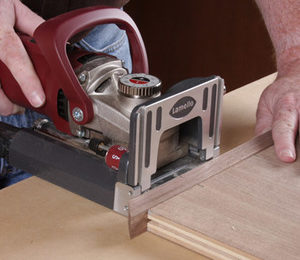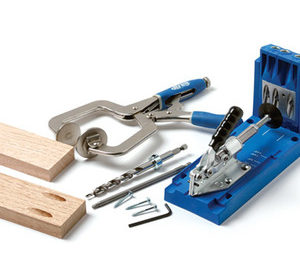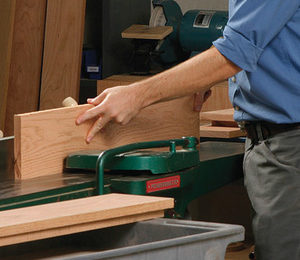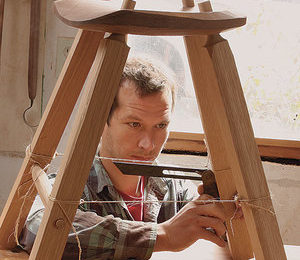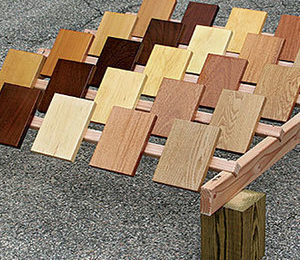Thu, 18 July 2019
Danish Modern Desk with Tim Rousseau Question 1: From Devin: Question 2: From the Fine Woodworking forum by forum member NewAndGreen: Question 3: Also from Paul:
Price of Osmo Polyx Oil at time of broadcast: .75-Liter=$58.56 Segment: All-Time Favorite Technique of All Time Mike: Tom McLaughlin’s “cut some off and glue it on the other side” technique Anissa: Steve Latta’s hinged flips stop Ben: Using metal files to shape difficult woods Question 4: From Brendan: And from Paul:
Recommendations: Anissa - Ted Talk - Rives: The Museum of Four in the Morning
Every two weeks, a team of Fine Woodworking staffers answers questions from readers on Shop Talk Live, Fine Woodworking‘s biweekly podcast. Send your woodworking questions to shoptalk@taunton.com for consideration in the regular broadcast! Our continued existence relies upon listener support. So if you enjoy the show, be sure to leave us a five-star rating and maybe even a nice comment on our iTunes page.
|
||||||||||
Fri, 5 July 2019
Start Woodworking Season 1 by Matt Berger, Asa Christiana https://www.finewoodworking.com/videoworkshop/2019/07/start-woodworking-season-1 Question 1: From Dan: I recently built a pair of desks featured in issue #270. I built them mostly the way Michael Robbins did, however instead of using a domino to construct the top I used pocket screws. I don't own a domino, I opted for a hollow chisel mortiser, and I thought it would be silly to use a hollow chisel mortise. How do you feel about pocket screws versus slip tenons made with a domino? Both tools make joining pieces of wood much simpler. One uses screws, the other uses wood and glue. One is under $100, and the other is over $1000. They are both faster and easier than traditional joinery. Am I wrong to think if I am not going to use traditional joinery pocket screws and domino slip tenons are interchangeable? I love my hollow-chisel mortiser, and if I'm gonna cheat on it, I’ll just use screws.
Question 2: From Chase: I was trying to edge-joint two 10-ft. long boards to make a wide shelf for our closet using a #7 handplane. Typically, I clamp the boards together and plane the common glue edge until I get an even shaving across both. I think that the length of the two boards meant there was some variation that the #7 didn't get. I can't imagine trying to joint these on a jointer, even if I had one. How would you go about making this glue up work?
Segment: All-time favorite tool of all time… for this week Mike: An Exacto knife with a brand new blade Asa: Cordless Trim Routers Ben: James Mursell Travisher (@windsorworkshop)
Question 3: From Chad, I was just listening to episode 190, and a listener asked about which big tool to buy next, a combo planer/jointer or a band saw. I've heard similar questions on the show before. I'm curious as to why you never mention the idea of investing in a makerspace, shared shop, or tool library? There are a lot of great examples of makerspaces that give access to fully stocked wood and metal shops for a reasonable membership fee as well as not-for-profit tool libraries that are usually state funded just like normal libraries that allow for the borrowing of tools like books! For someone who's just getting started in woodworking getting access to a full woodshop for a membership fee that wouldn't be enough to buy a single quality power tool might be worth considering! Maker Spaces: Tool Libraries: Question 4: From David: I am planning to build some outdoor chairs out of mahogany, and was wondering what finish to apply. I would like something that I don't have to touch up every year. Or, should leave them unfinished. How does mahogany age in the weather?
Recommendations: Ben - YouTube Channel: arboristBlairGlenn Every two weeks, a team of Fine Woodworking staffers answers questions from readers on Shop Talk Live, Fine Woodworking‘s biweekly podcast. Send your woodworking questions to shoptalk@taunton.com for consideration in the regular broadcast! Our continued existence relies upon listener support. So if you enjoy the show, be sure to leave us a five-star rating and maybe even a nice comment on our iTunes page.
|
||||||||||
Shop Talk Live - Fine Woodworking

Categories
generalArchives
AprilMarch
February
January
December
November
October
September
August
July
June
May
April
March
February
January
December
November
October
September
August
July
June
May
April
March
February
January
December
November
October
September
August
July
June
May
April
March
February
January
December
November
October
September
August
July
June
May
April
March
February
January
December
November
October
September
August
July
June
May
April
March
February
January
December
November
October
September
August
July
June
May
April
March
February
January
December
November
October
September
August
July
June
May
April
March
February
January
December
November
October
September
August
July
June
May
April
March
February
January
December
November
October
September
August
July
June
May
April
March
February
January
December
November
October
September
August
July
June
May
April
March
February
January
December
November
October
September
August
July
June
May
April
March
February
January
December
November
October
September
August
July
June
May
April
March
| S | M | T | W | T | F | S |
|---|---|---|---|---|---|---|
| 1 | 2 | 3 | 4 | 5 | 6 | |
| 7 | 8 | 9 | 10 | 11 | 12 | 13 |
| 14 | 15 | 16 | 17 | 18 | 19 | 20 |
| 21 | 22 | 23 | 24 | 25 | 26 | 27 |
| 28 | 29 | 30 | 31 | |||
Syndication

